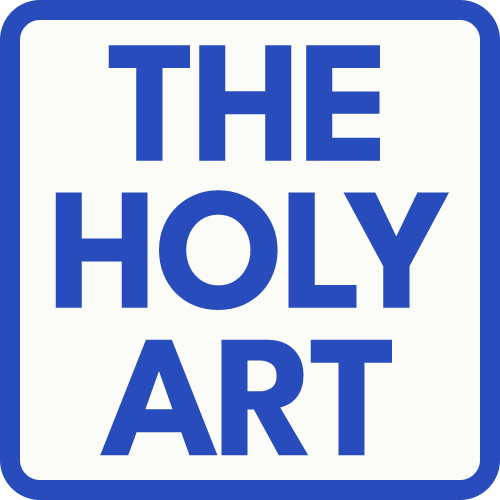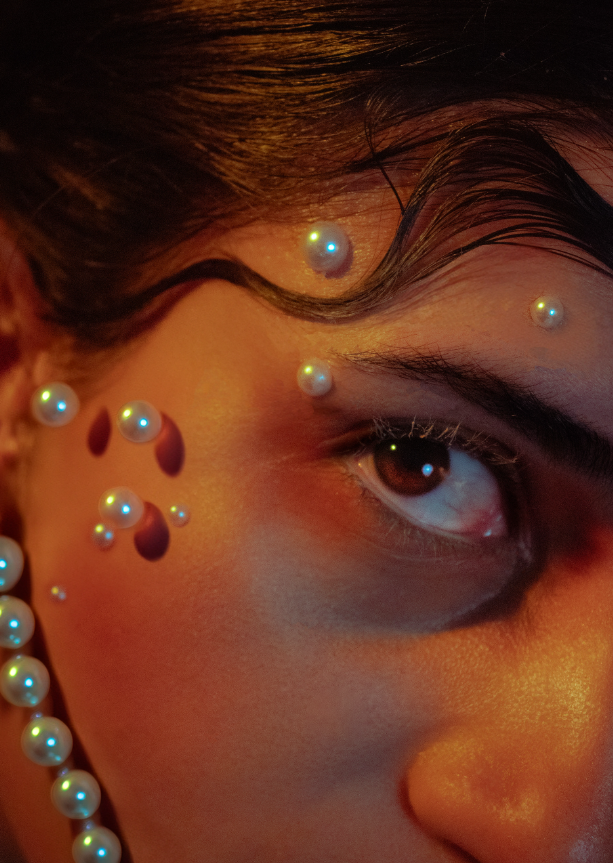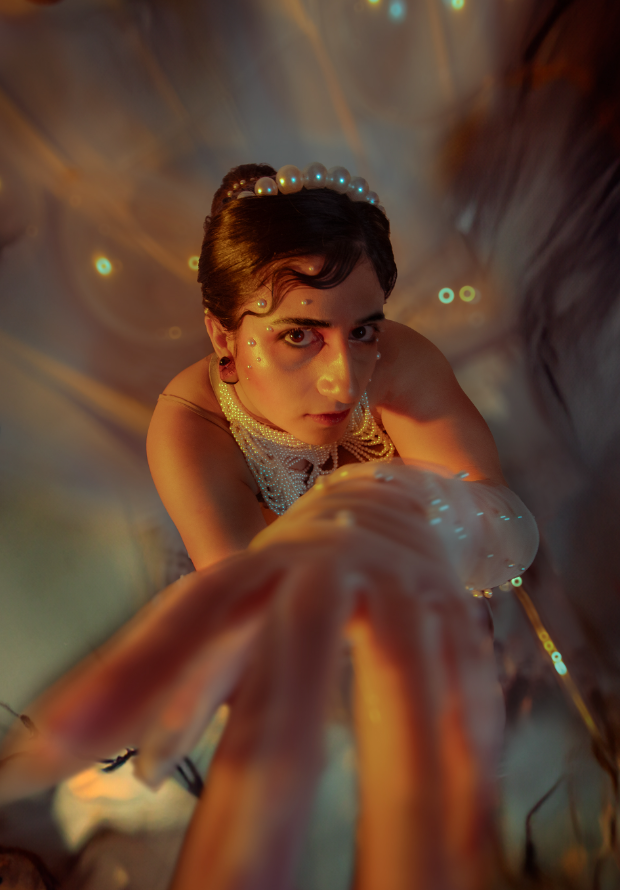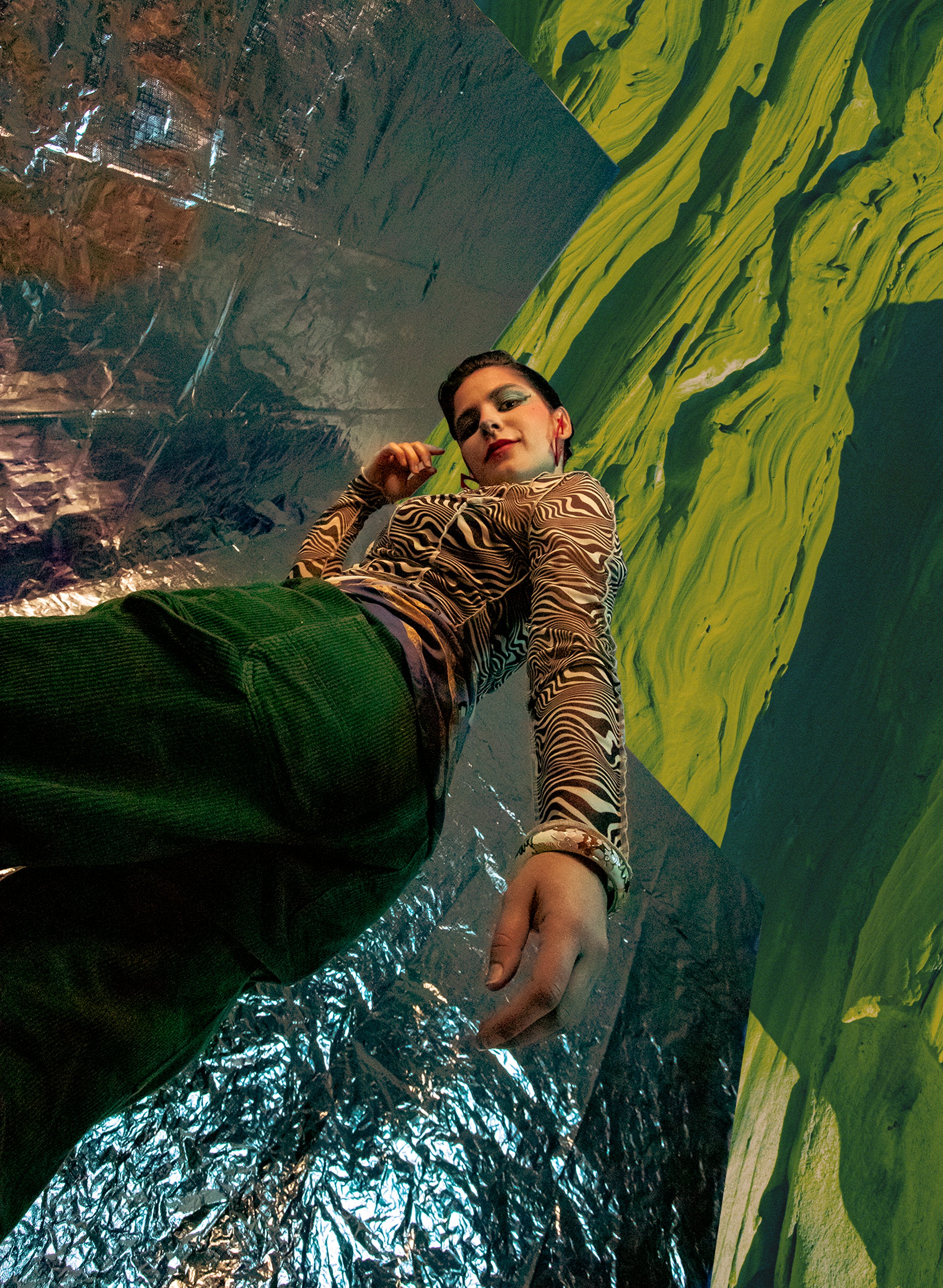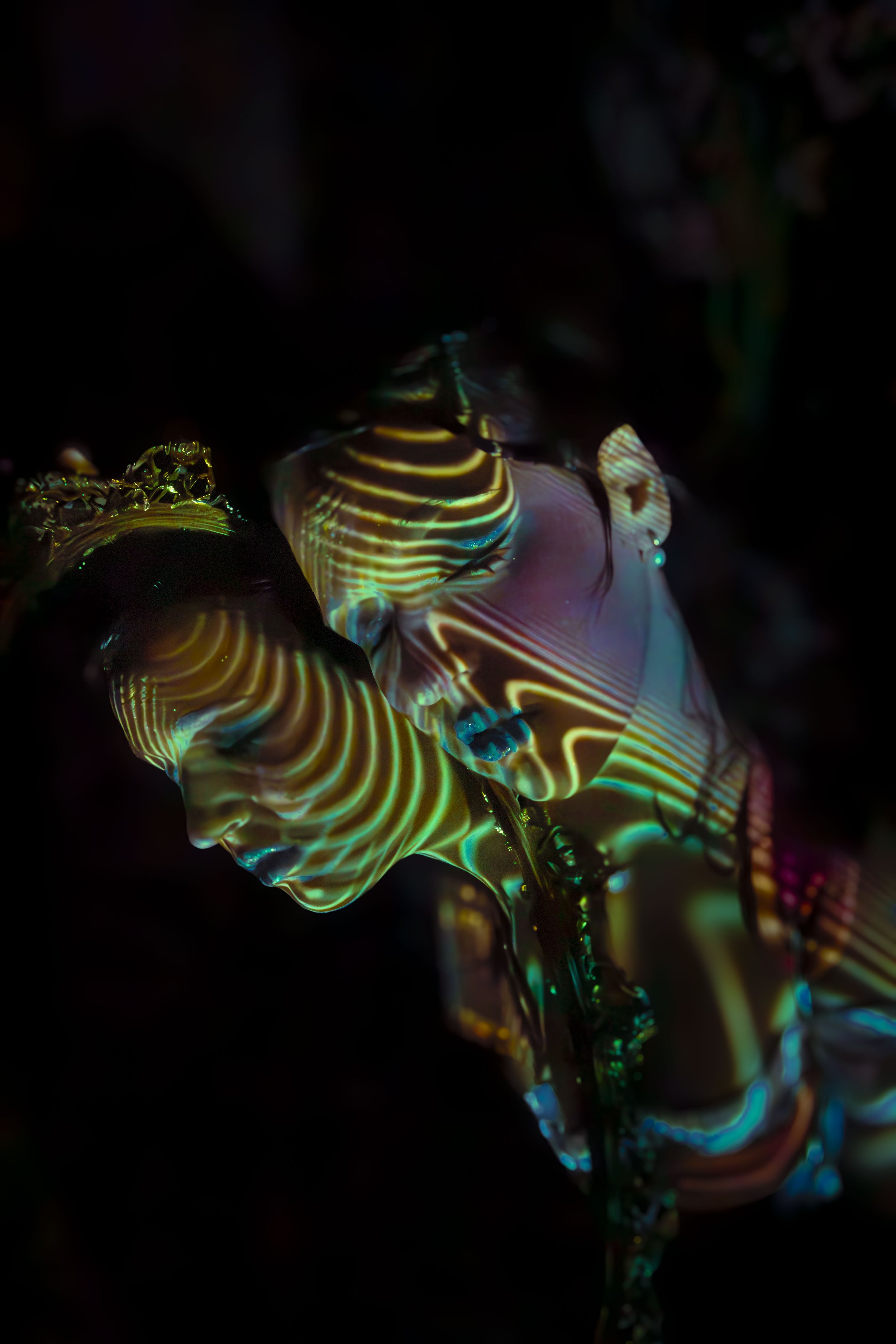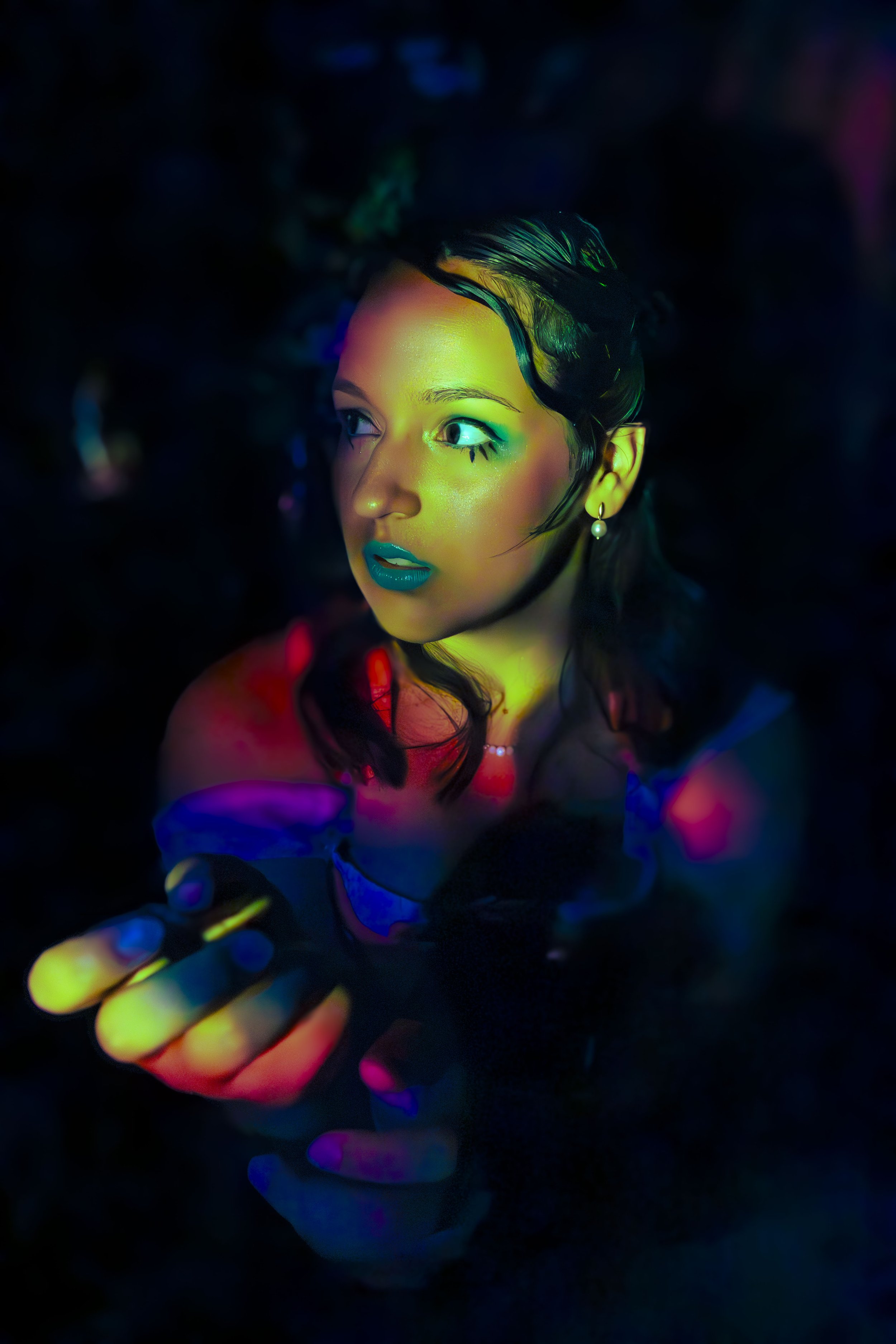Artist in conversation: Gabriela Amon
“ I feel that the real world can often feel dark and mundane, so I aim to make art that not only feels fun to create, but also inspires those who encounter it to bring more joy and whimsy into their own world”
Gabriela Amon is a distinguished multimedia artist based in the San Diego and Los Angeles County area of California. She graduated with a Bachelor of Arts degree in Multimedia Art from Loyola Marymount University in 2022. Growing up immersed in both American and Brazilian cultures, Gabriela developed a keen interest in using art as a form of alternative communication, especially for conveying ideas that are lost in translation.
Her work is a vibrant rebellion against the mundane, characterized by bold colors and whimsical imagery aimed at evoking heart, inspiration, and imagination. Gabriela explores genres like fantasy, surrealism, and the uncanny, creating art that invites viewers into otherworldly realms filled with depth and emotion.
Not confined to any single medium, Gabriela enjoys experimenting across various forms of art, including photography, computer graphics, digital design, typography, and collage. Through her diverse range of work, Gabriela Amon invites us to experience the world in more vivid and imaginative ways.
What initially inspired you to become an artist, and how did you develop your unique style?
Growing up between cultures and languages, I’ve always loved forms of communication that transcend language. Articulating emotions, memories, and communicating through a visual means has always been my favorite form of self-expression.
In terms of subject matter, what themes or motifs do you frequently explore in your work, and what draws you to these topics?
I have always been interested in fantasy, imagination, and surrealism. I feel that the real world can often feel dark and mundane, so I aim to make art that not only feels fun to create, but also inspires those who encounter it to bring more joy and whimsy into their own world.
How do you navigate the balance between self-destruction and re-creation as a way towards conscious Happiness?
It is very freeing to accept that art is eternally incomplete. As an artist and a person, I will always break down and change over time to become something new. It is important along the way to learn and grow, leaving behind work that was once what I would call “my best” to re-create it or start over. While this process can be difficult or even emotionally painful, it is vital to avoid stagnating and this growth over time will lead to much greater happiness.
How do you approach the creative process and concept development for a new project or photo shoot?
I start all my ideas with a vision board. Personally, I like to use Pinterest to keep all my vision boards organized, find daily inspiration, and determine the feel and subject matter of the project. I usually spend an exceptional amount of time on production when it comes to my creative photoshoots. This includes making costumes and props, often by hand, developing and staging sets, and working with hair and makeup. The final stage of my process is culling and editing, during which I use my intuition, style, and original vision board to pull together and refine my final images. I will often ask for a variety of opinions on my work, often doing second or third rounds of editing as needed before finalizing and publishing.
How do you select colors and forms to express your artistic ideas, and in what ways does your choice of medium contribute to this process?
I feel that my background in design has always contributed to my intuition when it comes to developing my vision in my projects. After years of creating my own projects and developing vision boards of things I resonated with, I was able to identify repetitive visual motifs, color palettes, and subject matter that all came together to become my own personal “style.” In most cases, this consists of ‘dark whimsical’ color palettes with a dramatic range of light and dark values, and organic and decorative forms.
How do you incorporate feedback from critics and audiences into your artistic practice, and how do you balance this feedback with your own artistic intuition.
Critique is a very important part of the creative process, because sometimes it can be hard to see the bigger picture on your own. I prefer to ask at least five people that I know are familiar with my work and style but that I can also trust to be honest about what does and does not work in my projects. It is very helpful to ask someone with more experience, when possible, as well as someone who inspires me or shares some of my vision. When it comes to deciding which advice to take, it’s usually just a gut feeling. When it’s hard to decide though, I try to ask more than two people about it and see what most people notice about that particular issue and how I would like it to be perceived instead.
How do you stay motivated and inspired despite any setbacks or creative blocks you may encounter?
Although creative blocks can be frustrating, I try to see them as an opportunity to shift my focus. I enjoy taking breaks and finding something new and inspiring. Some things that help me through creative blocks include spending more time at church, visiting the fiction or history section at a library or bookstore, doing some busywork at the Barnes & Noble Cafe, watching inspiring movies, visiting museums, spending time in nature, or traveling somewhere new when I can.
How do you feel about exhibiting your artworks with The Holy Art Gallery?
I have loved exhibiting my work with The Holy Art Gallery, it has not only been an exceptionally smooth and exciting process, but it has also opened up so many opportunities for me to share my work and meet other like-minded individuals.
Looking ahead, what are your long-term goals and aspirations as an artist, and how do you plan to achieve them?
In the future, I’d like to look back one day and see a life well lived with plenty of exploration, stories, and artwork to document it along the way. I hope to also inspire as many people as I can and leave my mark on the world to help form it into a happier, more hopeful place for others.
What role does emotion play in your creative process, and how do you aim to evoke specific feelings or reactions from those who view your artworks?
I think the most emotional part of my work is that it reminds me of how much fun I had with imagination in my childhood. I find the world to be increasingly difficult to live in for many of us, and there always seems to be bad news every day. When I was younger, I used to dream of a very different reality. It frustrates me to see that those dreams haven’t quite come true yet, and it saddens me to see that others around me seem to have stopped dreaming altogether. More than anything, I want to spark hope in others with my artwork and inspire them to start dreaming again.
